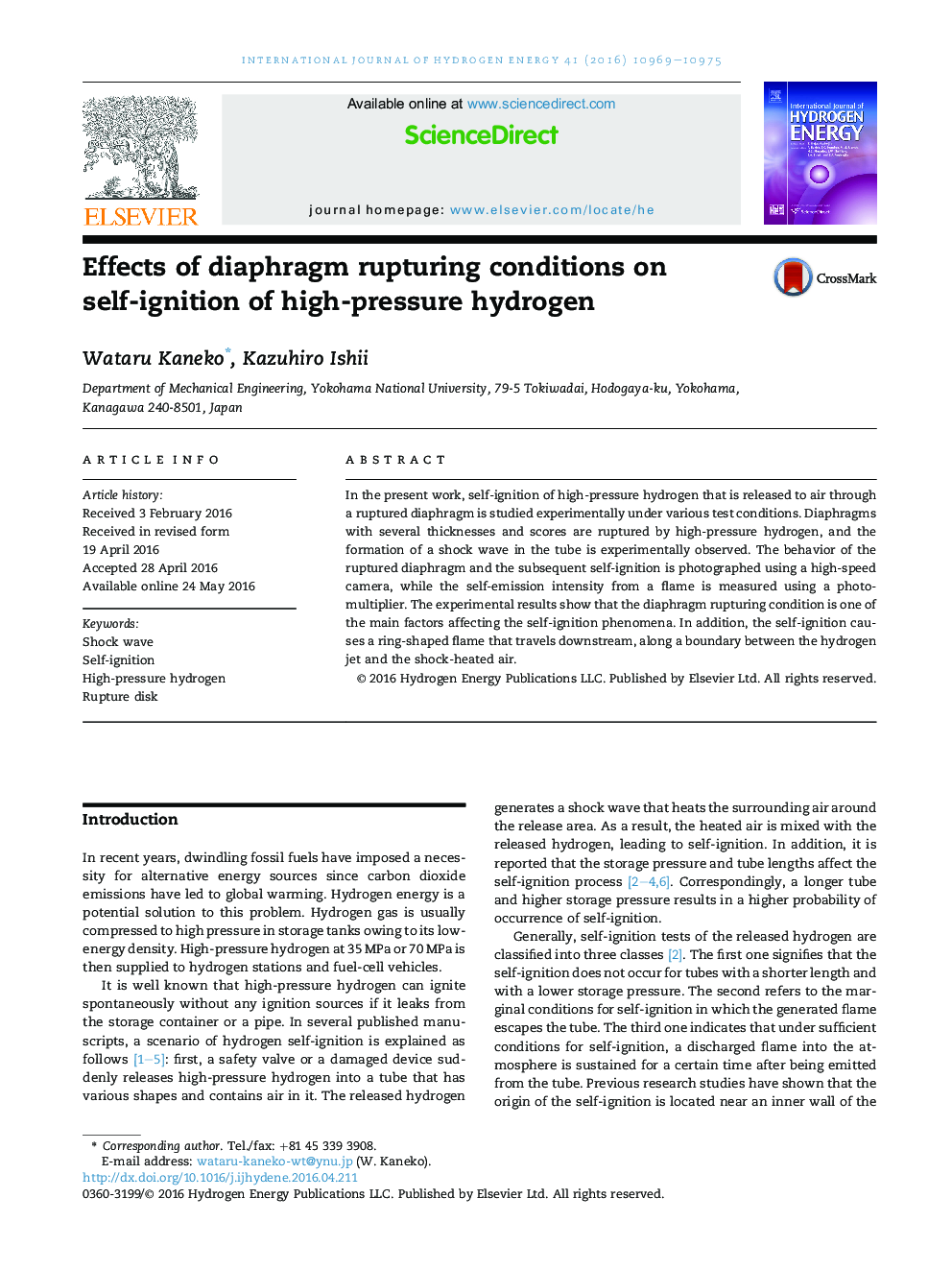| Article ID | Journal | Published Year | Pages | File Type |
|---|---|---|---|---|
| 1276821 | International Journal of Hydrogen Energy | 2016 | 7 Pages |
•High-pressure hydrogen released into a tube filled with air causes self-ignition.•The diaphragm is scored precisely to improve reproducibility of diaphragm rupture.•The self-ignition relationship between shock speed and tube length is obtained.•A ring-shaped flame is formed near the inner wall after self-ignition.
In the present work, self-ignition of high-pressure hydrogen that is released to air through a ruptured diaphragm is studied experimentally under various test conditions. Diaphragms with several thicknesses and scores are ruptured by high-pressure hydrogen, and the formation of a shock wave in the tube is experimentally observed. The behavior of the ruptured diaphragm and the subsequent self-ignition is photographed using a high-speed camera, while the self-emission intensity from a flame is measured using a photomultiplier. The experimental results show that the diaphragm rupturing condition is one of the main factors affecting the self-ignition phenomena. In addition, the self-ignition causes a ring-shaped flame that travels downstream, along a boundary between the hydrogen jet and the shock-heated air.
